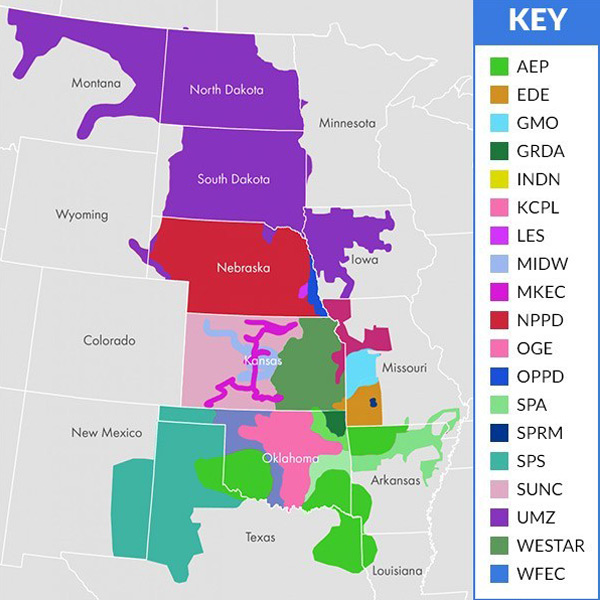Reactions to the Supreme Court’s decision in West Virginia v. EPA came fast and, predictably, framed with an eye on upcoming midterm elections.
The 6-3 decision overturned a lower court ruling that had upheld the EPA’s authority to regulate carbon emissions from existing power plants under the Clean Power Plan developed during the administration of former President Obama and overturned by his successor, former President Trump. (See Supreme Court Rejects EPA Generation Shifting).
“Capping carbon dioxide emissions at a level that will force a nationwide transition away from the use of coal to generate electricity may be a sensible ‘solution to the crisis of the day,’” said Chief Justice John Roberts, writing for the majority. “But it is not plausible that Congress gave EPA the authority to adopt on its own such a regulatory scheme in Section 111(d) [of the Clean Air Act]. A decision of such magnitude and consequence rests with Congress itself, or an agency acting pursuant to a clear delegation from that representative body.”
Republicans and fossil fuel industry groups praised the court, decried the Biden administration’s regulatory “overreach” and linked federal efforts to cut greenhouse gas emissions to high gas prices and the threat of summer power outages.
Democrats and clean energy advocates meanwhile criticized the court for its backward-looking decision and called for federal and state legislative action in response.
But on Twitter, and among legal and energy experts, the reactions were more measured, seeing the decision as a curb on EPA authority but far from gutting its ability to regulate greenhouse gas emissions under the Clean Air Act.
For many, the question is how the decision will affect President Joe Biden’s goal of cutting greenhouse gas emissions 50% by 2030, the U.S. commitment under the Paris climate accords.
John Bistline, a program manager at the Electric Power Research Institute, said reaching that goal will mean policies will have to evolve. Bistline said the country still has “a lot of ways we could potentially reach those targets that could be combinations of federal and state policies, things like a CO2 cap-and-trade system … regulation like performance standards, including the ones that were at the center of today’s decision, as well as broader incentives, things like enhanced tax credits.”
But Bistline also said the decision could create uncertainty for utilities and other businesses. Based on existing policies, the U.S. will only be able to cut GHG emissions 6% to 28% below 2005 levels by 2030, he said.
The Governors
West Virginia Gov. Jim Justice (R) was among the first to weigh in on the decision. “This ruling … will stop unelected bureaucrats in Washington, D.C., from being able to unilaterally decarbonize our economy just because they feel like it,” Justice said. “Instead, members of Congress who have been duly elected to represent the will of the people across all of America will be allowed to have a rightful say when it comes to balancing our desire for a clean environment with our need for energy and the security it provides us.”
 West Virginia Gov. Jim Justice | Office of Gov. Jim Justice
West Virginia Gov. Jim Justice | Office of Gov. Jim JusticeTexas Gov. Greg Abbott (R) called the ruling a “landmark victory against an out-of-control administration” and “a big win for Americans who worry about skyrocketing energy costs due to expensive federal regulations that threaten our energy industry.” Texas and West Virginia were among 20 states that joined in the court challenge.
But California Gov. Gavin Newsom (D) slammed the court for siding “with the fossil fuel industry [and] kneecapping the federal government’s basic ability to tackle climate change. Today’s ruling makes it even more imperative that California and other states succeed in our efforts to combat the climate crisis. While the court has once again turned back the clock, California refuses to go backward — we’re just getting started.”
Washington Gov. Jay Inslee (D) agreed in a Twitter post, saying the court had “dealt a blow to federal efforts to combat [the] climate change ravages of coal fired pollution. This means we, in our own state, need to up our game. We are fully up to the task. States like [Washington] have been leading on climate action, and we aren’t done.”
Capitol Hill
Congressional leaders on both sides of the aisle declared themselves ready to use their legislative authority, although with very different goals in mind.
 Rep. Cathy McMorris Rodgers (R-Wash.) | House E&C Committee
Rep. Cathy McMorris Rodgers (R-Wash.) | House E&C Committee“When Congress acts to address major policy questions affecting Americans and their livelihoods, it says so clearly, explicitly,” said Cathy McMorris Rodgers (R-Wash.), ranking member of the House Energy and Commerce Committee.
“It does not hide sweeping authorities of the executive branch in obscure provisions of the law … This decision restores power to the people through their elected representatives.”
Sen. John Barrasso (R-Wyo.), ranking member of the Senate Energy and Natural Resources Committee, tweeted that the decision “rightfully reins in unreasonable and unlawful attempts to shut down American power plants and energy production.”
In response, longtime climate advocate Sen. Ed Markey (D-Mass.) said the decision “takes away the EPA’s firehose and gives it a leaky bucket instead.
 Sen. Ed Markey | Sen. Ed Markey via Twitter
Sen. Ed Markey | Sen. Ed Markey via Twitter“We will fight in Congress and in the executive branch to do what we can and to not back down, but no one, not ISO-NE, not our state governments, not our city councils, can now sit out this crisis and wait for a climate chaos to arrive,” Markey said at a Thursday press conference. “The Supreme Court will not and cannot be the last word on climate action.”
“There is no doubt that this decision is the result of years of coordinated, calculated efforts by Republicans and polluting special interests to undermine Americans’ right to clean, safe air,” said Rep. Frank Pallone (D-N.J.), chair of the House Energy and Commerce Committee.
He called on Congress to “redouble our efforts to enact robust climate programs and investments to address the crisis we face. EPA continues to have many powerful tools at its disposal, and there is more both Congress and the president can do to meet the climate crisis head-on.”
The Lawyers and Academics
Discussions on Twitter focused on the decision’s “silver linings” and other pathways to GHG emissions reductions.
The court “did NOT go after EPA’s authority to regulate GHGs,” said Jesse Jenkins, a professor at Princeton University’s Andlinger Center for Energy and Environment. “They just struck at the Obama EPA’s outside fence line sectoral approach to regulate emissions under 111(d), which was always a ‘creative’ reading of statute, if we’re being generous.”
Jody Freeman, director of the Environmental and Energy Law Program at Harvard Law School, agreed, saying the decision does not strip the EPA of its authority. “The silver lining is EPA’s authority to determine [the] best system of emissions reduction is intact and reinforced,” she said.
Similarly, Michael Gerrard, director of the Sabin Center for Climate Change Law at Columbia University, said EPA can still regulate GHG emissions from motor vehicles and new power plants and factories. “The decision was basically about coal-fired power plants, but EPA can still regulate them in other ways, such as limiting their other air pollutants; coal ash; hot water discharges.”
Trade Associations
Reactions from utility and fossil fuel trade associations supported the decision but were more moderate in tone and keyed to reflect consumer concerns.
 Jim Matheson, NRECA | NRECA
Jim Matheson, NRECA | NRECAJim Matheson, CEO of the National Rural Electric Cooperative Association, said the decision puts the EPA back on an “appropriate regulatory path, requiring it to set achievable emissions guidelines that can be accomplished at existing power plants, while also allowing states to consider local factors and have the final say on compliance options.
“The energy decisions we make today will determine whether there are sufficient resources for the lights to come on tomorrow,” Matheson said, linking early “disorderly” fossil fuel plant retirements to the threat of rolling blackouts through the summer months.
Michelle Bloodworth, CEO of America’s Power, a coal industry trade association, echoed Matheson.
 Michelle Bloodworth, America’s Power | USEA
Michelle Bloodworth, America’s Power | USEA“We urge EPA to avoid issuing a replacement rule that causes more premature coal retirements, especially as officials are warning about the prospect of electricity shortages that threaten grid reliability in many parts of the country.”
While not directly commenting on the decision, the American Petroleum Institute (API), touted the industry’s efforts to reduce its emissions, through “continuous innovation.”
The industry has already reduced its CO2 emissions to “generational lows … outpacing the Clean Power Plan,” and “will continue to work with policymakers across the federal government in support of smart regulations that build on the progress we’ve made on CO2 emissions reductions while bolstering our energy security,” API said.
The Advocates
Advocacy groups focused on the ripple effects the decision could have.
Sasha Mackler, executive director of the energy program at the Bipartisan Policy Center, said the ruling will cause uncertainty at a time “when greater clarity on national climate policy is needed.”
“Administrative actions to reduce carbon emissions are important, but they have proven to be slow, contentious and inadequate,” Mackler said. “With agencies now further constrained, the only path forward to a broad and effective program driving the transition to a national low-carbon energy system is for Congress to come together to enact durable, bipartisan energy and climate legislation.”
Drew Bond, president of the Conservative Coalition for Climate Solutions, called the decision “a win for the climate and constitutional democracy.
“Innovation, not overregulation, is the solution to reducing global greenhouse gas emissions,” Bond said. “Instead of looking to regulators to impose top-down mandates, activists on all sides should ask legislators to pass laws that encourage bottom-up solutions.”
But Andrew Behar, CEO of As You Sow, a shareholder advocacy group, said the decision could put a damper on corporate commitments to reduce emissions “and will leave the U.S. economy behind Europe, China and other nations driving low-carbon technology development.
“Investors with trillions of assets under management are moving to decarbonize their portfolios to achieve net-zero emissions and thousands of the world’s largest companies, many in the S&P 500, are setting targets for their operations and value chains to draw down their emissions to net-zero,” he said. “An even playing field and clear regulatory guidelines from EPA are necessary to drive progress across the economy.”





